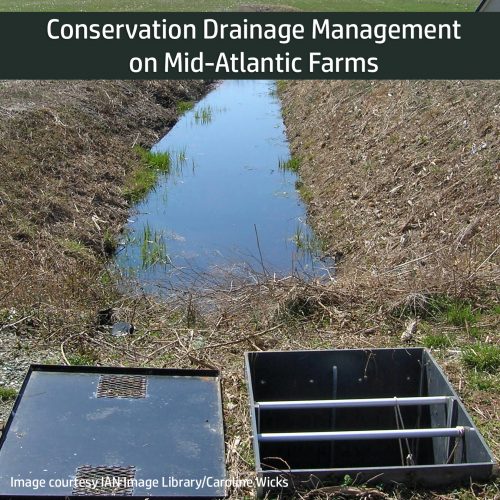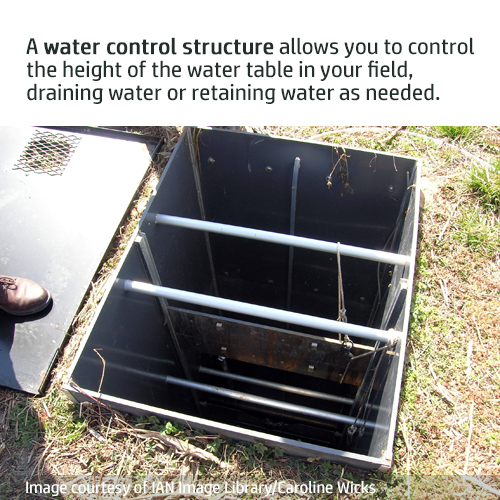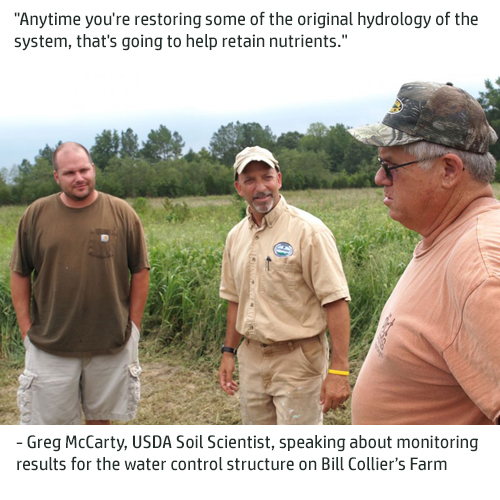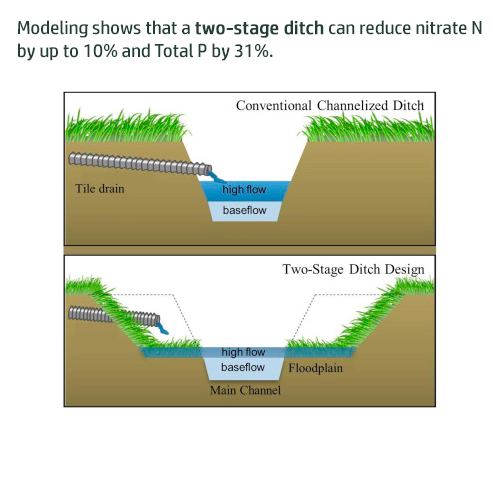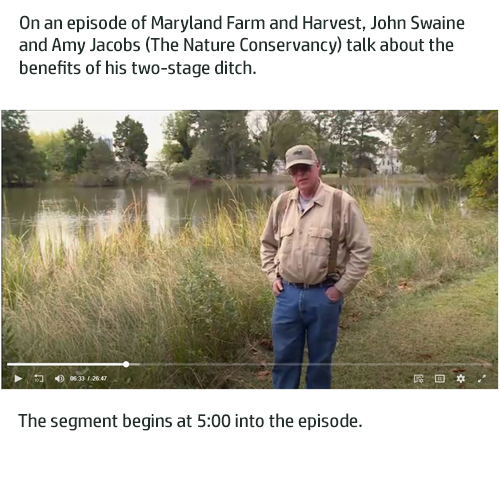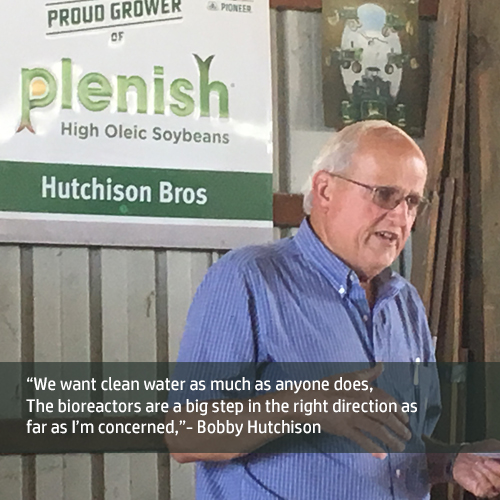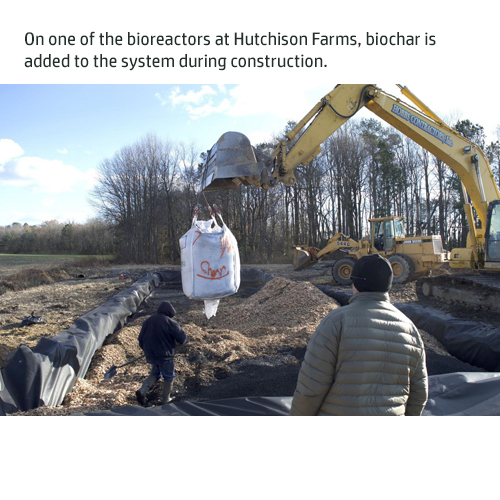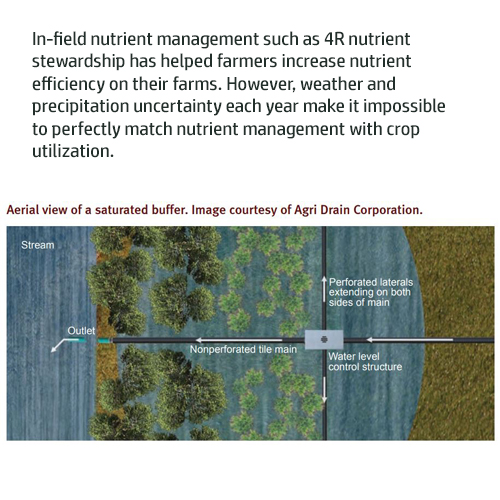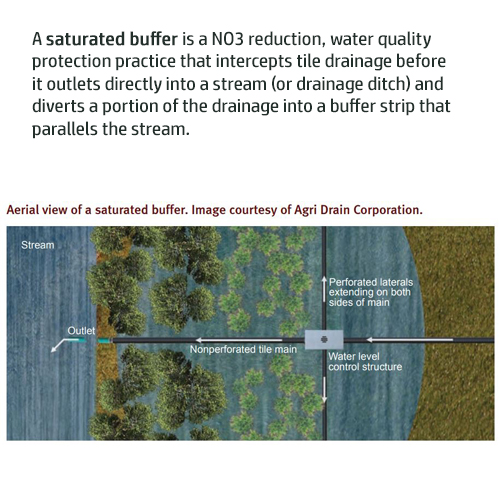Conservation Drainage Management
Conservation Drainage Management plays a critical role in a whole-system 4R approach. Draining excess water from the field can be necessary for productive cropland, but may also increase nutrient loss and erosion.
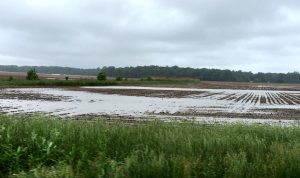 Why Conservation Drainage Management?
Why Conservation Drainage Management?
In many agricultural fields, artificial drainage is essential for crop production. Up to 50% of the cropland in some states is artificially drained. In Maryland, for example, 821 miles of ditches drain approximately 183,000 acres of land.
In the same way that artificial drainage moves water out of a field quickly to avoid flooding crops, it can also create an effective conduit to transport nutrients and sediment to nearby water bodies.
Several conservation options are available to help reduce the loss of nutrients and soil, including:
- Drainage Water Management using Water Control Structures
- Two-Stage Ditches
- Saturated Buffers
- Blind Inlets
- Gypsum Curtains or Filters
- Woodchip Bioreactors
- and more
Conservation Drainage Management Practices are engineered solutions, so they are selected and designed based on the conditions at each site. Some of these site considerations include slope, soil type, drainage area and pollutant of concern (nitrogen, phosphorus or sediment). Some of these projects have been featured on Delmarva farms:
Resources:
- Recorded Presentation: Conservation Drainage (ShoreRivers)
- Web Page: Conservation Drainage for the Midwest (Purdue)
- Article: Drainage Water Management for Water Quality Protection (Journal of Soil and Water Conservation)
- Article: Wetlands, Bioreactors, Buffers- What You Need to Know (Wallaces Farmer)
- Search for additional resources here:
Related Practices
Natural Filters
Header image courtesy of Caroline Wicks via the IAN Image Library

